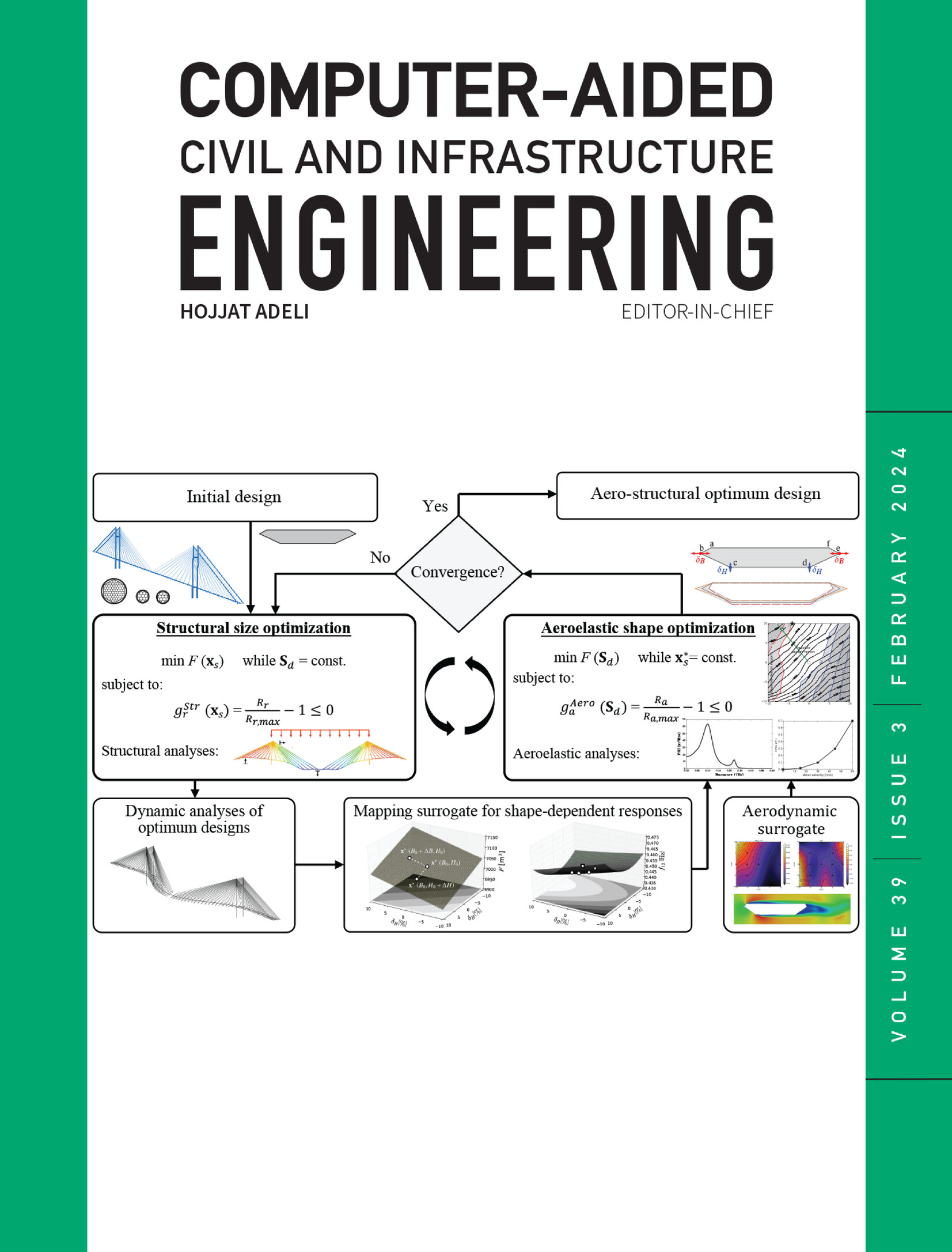预制构件分割的自适应特征扩展与融合模型
IF 8.5
1区 工程技术
Q1 COMPUTER SCIENCE, INTERDISCIPLINARY APPLICATIONS
引用次数: 0
摘要
预制构件夹层板的装配和生产对模块化结构的安全至关重要。尽管计算机视觉已广泛应用于生产质量和安全监控,但夹心板预制构件中构件间的大规模差异和众多的背景干扰因素给计算机视觉带来了巨大的挑战。因此,在实际情况下,保持模型识别的准确性仍然是一个很大的挑战。本文提出了一种实例分割模型,即自适应特征扩展与融合(AFFS)。该模型包含动态特征聚合机制,并具有扁平的网络结构,能够实现高效的特征处理和精确的实例分割。此外,AFFS支持快速适应新添加的数据或组件类别,只需更新特征提取层。综合实验评估表明,所提出的AFFS实现了出色的识别精度(mAP50达到95.8%,mAPmin达到99.9%),显著优于几种最先进的实例分割网络,包括You Only Look Once (YOLO), segmentation Objects by Locations v2 (SOLOv2)和基于级联掩码区域的卷积神经网络(Cascade Mask R - CNN)。本文章由计算机程序翻译,如有差异,请以英文原文为准。
Adaptive feature expansion and fusion model for precast component segmentation
The assembly and production of sandwich panels for prefabricated components is crucial for the safety of modular construction. Although computer vision has been widely applied in production quality and safety monitoring, the large‐scale differences among components and numerous background interference factors in sandwich panel prefabricated components pose substantial challenges. Therefore, maintaining the model recognition accuracy remains a big challenge in practical circumstances. This paper presents an instance segmentation model, namely adaptive feature expansion and fusion (AFFS). The proposed model includes a dynamic feature aggregation mechanism and possesses a flattened network architecture, enabling efficient feature processing and precise instance segmentation. Moreover, AFFS supports rapid adaptation to newly added data or component categories by updating only the feature extraction layers. Comprehensive experimental evaluations demonstrate that the proposed AFFS achieves outstanding recognition accuracy (mAP50 reaching 95.8% and mAPmin reaching 99.9%), significantly outperforming several state‐of‐the‐art instance segmentation networks, including You Only Look Once (YOLO), Segmenting Objects by Locations v2 (SOLOv2), and Cascade Mask Region‐based Convolutional Neural Network (Cascade Mask R‐CNN).
求助全文
通过发布文献求助,成功后即可免费获取论文全文。
去求助
来源期刊
CiteScore
17.60
自引率
19.80%
发文量
146
审稿时长
1 months
期刊介绍:
Computer-Aided Civil and Infrastructure Engineering stands as a scholarly, peer-reviewed archival journal, serving as a vital link between advancements in computer technology and civil and infrastructure engineering. The journal serves as a distinctive platform for the publication of original articles, spotlighting novel computational techniques and inventive applications of computers. Specifically, it concentrates on recent progress in computer and information technologies, fostering the development and application of emerging computing paradigms.
Encompassing a broad scope, the journal addresses bridge, construction, environmental, highway, geotechnical, structural, transportation, and water resources engineering. It extends its reach to the management of infrastructure systems, covering domains such as highways, bridges, pavements, airports, and utilities. The journal delves into areas like artificial intelligence, cognitive modeling, concurrent engineering, database management, distributed computing, evolutionary computing, fuzzy logic, genetic algorithms, geometric modeling, internet-based technologies, knowledge discovery and engineering, machine learning, mobile computing, multimedia technologies, networking, neural network computing, optimization and search, parallel processing, robotics, smart structures, software engineering, virtual reality, and visualization techniques.

 求助内容:
求助内容: 应助结果提醒方式:
应助结果提醒方式:


